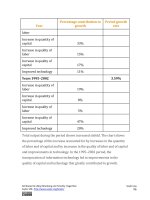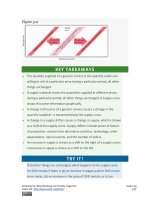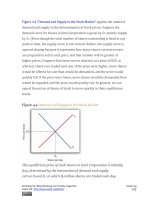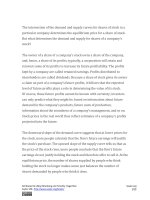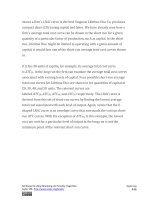Authors libby rittenberg 481
Bạn đang xem bản rút gọn của tài liệu. Xem và tải ngay bản đầy đủ của tài liệu tại đây (378.62 KB, 1 trang )
As we learned, a firm’s total cost curve in the short run intersects the
vertical axis at some positive value equal to the firm’s total fixed costs.
Total cost then rises at a decreasing rate over the range of increasing
marginal returns to the firm’s variable factors. It rises at an increasing rate
over the range of diminishing marginal returns. Figure 9.6 "Total Revenue,
Total Cost, and Economic Profit" shows the total cost curve for Mr. Gortari,
as well as the total revenue curve for a price of $0.40 per pound. Suppose
that his total fixed cost is $400 per month. For any given level of output,
Mr. Gortari’s economic profit is the vertical distance between the total
revenue curve and the total cost curve at that level.
Figure 9.6 Total Revenue, Total Cost, and Economic Profit
Economic profit is the vertical distance between the total revenue and
total cost curves (revenue minus costs). Here, the maximum profit
attainable by Tony Gortari for his radish production is $938 per
month at an output of 6,700 pounds.
Let us examine the total revenue and total cost curves in Figure 9.6 "Total
Revenue, Total Cost, and Economic Profit" more carefully. At zero units of
Attributed to Libby Rittenberg and Timothy Tregarthen
Saylor URL: />
Saylor.org
481
